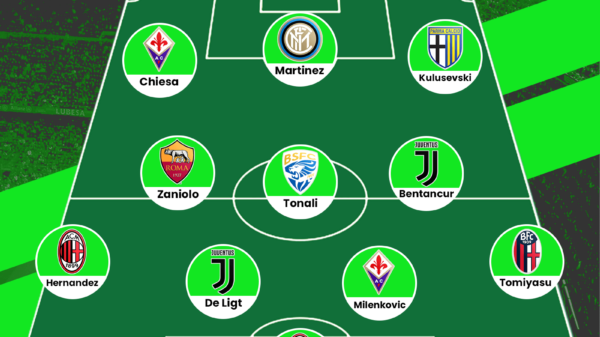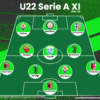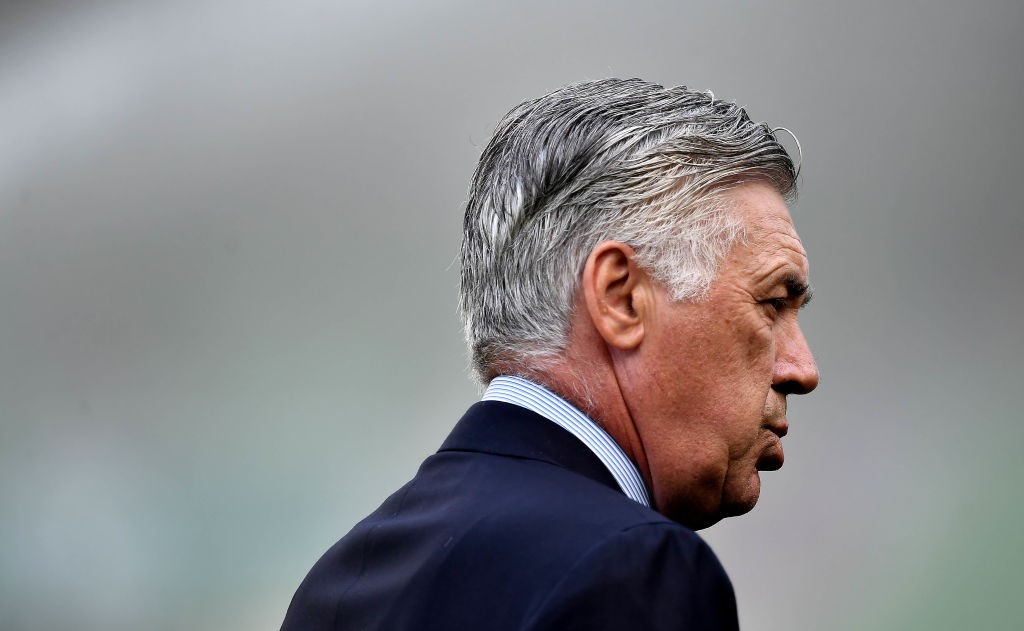Miles Olusina writes a detailed tactical analysis of the Serie A match that ended Inter 1-2 Lazio.
The current league leaders looked to be firm favourites going into this game against the other men from the capital, who came into this fixture in abysmal form, collecting only 2 points from their last 7 games. Inter could boast a watertight defence which had kept an outstanding 11 clean sheets from a possible 16 prior to this game; add to this a reinvigorated Mauro Icardi leading the line and Inter’s chances of maintaining their 4 point lead over their nearest challengers Fiorentina heading into the Christmas break seemed very high.
However, the underdogs tore up the script and stole a win at the Giuseppe Meazza late on with a superb defensive display which kept the hosts at bay for almost the entirety of the game. Inter’s failure to effectively breach this Lazio side was not only due to their lack of connectivity in midfield as a result of the detrimental positioning of their double pivot of Gary Medel and Felipe Melo in the attacking phase, but also as a well-organised man-oriented marking system in the centre of midfield.
For much of the 1st half, Inter seemed almost unable to get even the slightest of sniffs at goal until a change to a 4-3-3 system, with Brozovic and Ljajic instrumental, gave them the foothold in the game they so desperately needed. Although this was not enough as Felipe Melo’s reckless challenge on Antonio Candreva in the 86th minute led to a penalty, costing his side the breathing space at the top that could prove vital come the end of the season.
Line Ups:

Made using Tactical Pad
Inter (4-2-3-1/4-3-3): 1. Handanovic // 14. Montoya, 25. Miranda, 24. Murillo, 12. Telles // 17. Medel, 83. Melo // 11. Biabiany, 10. Jovetic, 44. Perisic // 9. Icardi
Lazio (4-2-3-1): 99. Berisha // 29. Konko, 33. Mauricio, 2. Hoedt, 26. Radu // 20. Biglia, 21. Milinkovic-Savic // 87. Candreva, 10. Felipe Anderson 16. Parolo // 17. Matri
Substitutions: 58’ Brozovic (Biabiany), 58’ Ljajic (Jovetic), 89’ Palacio (Telles) // 74’ Djordjevic (Matri), 83’ Keita (Felipe Anderson), 90’ Patric (Candreva)
Goals: 61’ Icardi // 5’ Candreva, 87’ Candreva
Lazio pressure unsettles Inter in build-up phase
For much of the game, and in particular the 1st half, much of Inter’s failure to construct effective attacks and play through the midfield third. This was in no small part, due to Lazio’s structure when Inter were in their 1st phase of attack and the centre-backs Miranda and Murillo were in possession.
In stark contrast to Inter, who would normally initiate 1st phase pressure with only Icardi, the lone front man leading the press, Lazio would tend to stagger their front 4 ensuring the two 6s (Medel and Melo) were unable to find space in behind the first waves of pressure. Although, the static and ineffective movement of Inter’s two 6s made this even more of a simple task.

Lazio staggered front 4 in Inter build-up phase
In this image, Inter are in possession with Miranda who is attempting to bring the ball into the next phase of the attack but is unable to find any vertical passing options due to the lack of compactness in the Inter set up. Lazio are taking full advantage of this by positioning players between the lines, such as Matri who is in between Murillo and Medel allowing him access to both players should either of them receive the ball.
The pressure was being led by Parolo, who can be seen in the image intercepting Miranda’s attempted long pass. He was excellent in this game from a defensive perspective, halting Inter’s progression in the 1st phase and denying the centre backs the ability to play incisive passes into midfield. He finished the game with 5 interceptions, 3 blocks and 3 attempted tackles, a superb return for an attacking player.
As a result Inter had limited access to central areas in the 1st and 2nd phases of attack. When in possession, both of their centre-backs had no choice but to play it out wide to the nearest full-back.


Inter centre-backs passing combinations to full-backs via FourFourTwo Stats zone
Their inability to play centrally in the build-up phases was in no small part due to the static movement of Gary Medel and Felipe Melo in the no. 6 role they both played. Too often their movement off the ball was relatively non-existent when Miranda and Murillo were in possession of the ball.

Melo and Medel ineffective positioning in Inter build-up
Both Melo and Medel are in positions which hinder their side’s ability to build a stable phase of possession. Handanovic has the ball and is looking to distribute it; he has both centre backs Miranda and Murillo to his left and his right and further forward centrally are the two 6s.
Despite appearing to have a multitude of options to which he can distribute the ball and allow play to progress he is unable to do so without their build-up being thwarted by the Lazio front 4. Melo’s passing lane is being obstructed by Matri and is thus rendered ineffective, while Medel is being marked too closely by Parolo. His half-space positioning could have proved more effective had he or Melo dropped in between the centre-backs to create a 3 v 2 overload.
Had they set up differently and Melo dropped between the centre-backs as seen in the image above, Inter would have the overload as Matri may have been reluctant to track Melo all the way so as to not disrupt the set up in the 1st phase of pressure and disorganise the team shape.
As a result the Inter players involved in this phase are experiencing much greater connections and can play between the lines with greater facility.
Inter change of system = enhanced control of central areas
Inter’s double 6 partnership of Medel and Melo did not only prove problematic in the build-up, but had serious complications when connecting in the midfield and linking with the attack. Too often during the game, until the change, Medel and Melo were both very reluctant to vacate the 6 space in an attempt to link play. Both appeared to passive and conservative, as both are too accustomed to playing a more withdrawn role in the double pivot. This resulted in a lack of balance in the pivot as they were both overly-defensive and failed to give the team an attacking impetus.
This was made worse by Jovetic’s overly advanced positioning, who appeared to be functioning as a no.10 but rarely made any attempts to create chances in the final third or link play and receive the ball from the deeper midfielders. It was clear from his positioning and movement that he was operating as more of a second striker, working almost in tandem with Mauro Icardi and playing off him.
This at times stifled Icardi as he was starved of the service provided by creative players such as Kovacic and Hernanes, who have been sorely missed by Inter due to their ability to unlock opposition defences and link the midfield and attack effectively.

Inter’s disjointed midfield
Again both pivots are positioned too horizontally and as seen by the image, it has resulted in a substantial distance between the midfielders, meaning an inability to dominate and circulate the ball effectively in central areas. Instead they are looking to combine out wide with Jovetic and Perisic, however Lazio have effectively overloaded the half-space and wide area, causing Inter’s move to break down.
If they were looking to combine in wide areas, it would have made more sense for at least one of the 6s to move forward, possibly Melo, in order to play in Jovetic who has found room in the half-space. With Telles in possession, Jovetic’s passing lane is being blocked and therefore cannot be brought into the game in that moment. This would not have been the case with Melo, who could have played in Jovetic diagonally.
Although, an alternative option, could have involved playing centrally and exploiting the space between the lines of the Lazio midfield. Had Jovetic decided to move into the centre instead of the half-space and Melo moved further into the centre, Jovetic’s vertical passing lane would have been unblocked, allowing Inter to gain a foothold in the centre. In addition to this, the Lazio midfielders would have been attracted to the ball, creating space for other Inter players on the field.
The game was turned on its head, when a double change in system and personnel had very positive implications for Inter and almost led to them seizing the initiative in the game, which probably would have been the case were it not for the lack of midfield creativity in the side. With Inter struggling, Mancini introduced Marcelo Brozovic and Adem Ljajic in place of Jonathan Biabiany and Stevan Jovetic.


In both images, it is clear to see that Inter are much better equipped to playing into central areas and have prevented the central overload that Lazio appeared to have had for the entirety of the 1st half. Adem Ljajic frequently roamed from the left-hand side of midfield and looked to play in between Lazio lines, which unsettled the compactness of the Lazio midfield and caused either the right-back Konko or the 6, Milinkovic-Savic to deviate from their position within their team structure.
The enhanced connectivity was evident not only as a result of Ljajic but the introduction of Brozovic, who did an excellent job of linking with Melo and Medel, both of whom changed their roles in the set up slightly. Melo became the sole pivot with Medel and Brozovic as the 8s and because of this, Melo always had two vertical passing options in midfield, allowing his side to play through the thirds centrally, instead of being shunted out wide as they were previously.
Brozovic was instrumental in linking the midfield, as is seen in the first image, where he is willing to drop almost as deep as Medel and Melo to aid his team’s circulation of the ball. To balance out his movement and ensure they still had a presence in the centre further up the field, Ljajic would move centrally from his position out wide.
Inter’s only goal of the game came due to their insistence on playing centrally. The ball falls to Murillo after Lazio’s throw is intercepted and he picks out Perisic who finds Icardi to level the game.
Lazio were quick to adjust their shape in accordance with Inter’s in order to maintain their loose man-marking shape in midfield. From a 4-1-4-1 in the first half, Pioli’s men shifted to a 4-4-1-1 with Milinkovic-Savic operating as a defensive no.10 when his team were out of possession.

Lazio 4-1-4-1 in 1st half

Lazio shift to 4-4-1-1 in 2nd half
Where does this leave them?
Despite the slip up, Roberto Mancini’s side can hold their heads high after a decent performance and an exceptional 1st half of the season. They have certainly defied the expectations of most critics, and certainly me, who predicted a disappointing season after spending the last few years in the wilderness. Should they keep up this form which saw them reach the summit of Serie A, they have every reason to believe they can finish top of the tree. The signs are looking good for the Nerazzuri too, last time they were top at Christmas they went onto win the league, when a certain Jose Mourinho was in charge.
For Lazio, this win could prove pivotal in reigniting the form that saw them pip Napoli to final Champions League spot last season. After a shambolic 1st half of the campaign which has seen them slip to 10th and many of their key players, particularly last season’s star man Felipe Anderson, lose form. A number of fallen giants in the league appear to be back on the rise in recent seasons, as a result finishing in the top 3 and claiming the coveted Champions League spots is easier said than done.
Written by Miles Olusina
- Scout Report: Marcus Thuram | Gladbach’s attacking sensation - July 17, 2020
- Tactical Philosophy: Paulo Fonseca - May 28, 2020
- Maurizio Sarri at Chelsea: Tactical Approach & Key Players - September 5, 2018

























































